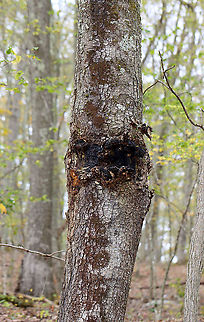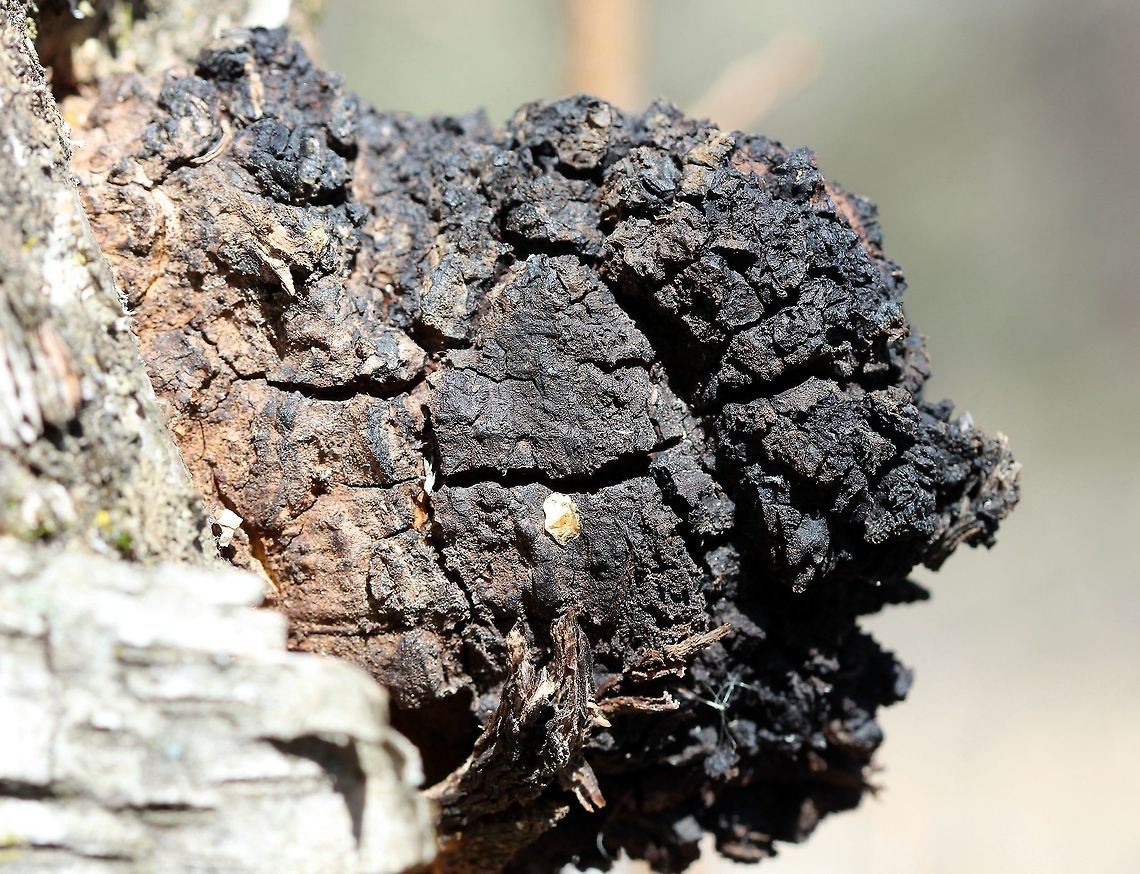
''Inonotus obliquus'', commonly called chaga , is a fungus in the family Hymenochaetaceae. It is parasitic on birch and other trees. The sterile conk is irregularly formed and resembles burnt charcoal. It is not the fruiting body of the fungus, but a sclerotium or mass of mycelium, mostly black because of a great amount of melanin. Some people consider chaga medicinal.
''Inonotus obliquus'' is found most commonly in the Circumboreal Region of the Northern Hemisphere, where it is distributed.. more
Similar species: Hymenochaetales
By Gary B
All rights reserved
Uploaded Apr 4, 2019. Captured Apr 3, 2019 15:03 in 4408 Miller Rd, Barnum, MN 55707, USA.


comments (15)
Oh, and it's best to collect your chaga before the sap flows. Once that happens, the water content will increase and nutrient levels will decrease. Posted 6 years ago, modified 6 years ago